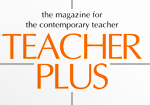Usha Raman
Over the last few months, life has almost returned to normalcy and the virus that threatened to consume us all is no longer being seen as a killer. The effects of the pandemic, however, continue to linger, both in terms of physical health and mental. Now more than ever, empathy and emotional support are important. Social and emotional learning can aid us in rebuilding our classrooms and societies.
Category: October 2022
Learning to deal with death
Neerja Singh
Death is one of life’s realities. By keeping children away from this reality we are not doing them any good. When children that have been shielded from this fact are suddenly confronted with the death of a loved one, they won’t know how to process all the feelings they are experiencing. This is why teachers should not avoid opportunities to talk about death and dying in the classroom.
The Everything School
Sheela Ramakrishnan
Once upon a time, it was the role of the home to nurture social and emotional skills in children. Today schools are offering curriculums to teach these skills. Are societies and homes no longer places to imbibe these qualities? Won’t adding these curriculums increase the school’s workload? We take a closer look at SEL, why we need it and how teachers can incorporate it in their classrooms.
Can we really teach how to feel?
Fiona Vaz In one of my classes, a few years ago, a professor of mine who taught educators how to teach controversial issues to school students, mentioned that patriotism can never be taught. My professor had taught history in primary Read More …
KYS: Know Your Students
Sanjhee Gianchandani
The one size fits all methodology although still the most popular, is widely accepted as not the best way to teach. Differentiated learning that suits individual learners and learning styles has to be incorporated in our classrooms and the first step towards that is getting to know our students better.
Celebration without waste
Sandhya Singh
No celebration or ritual is complete without flowers. But what about the floral waste that is generated afterwards? Floral waste is part of the larger problem of waste management and therefore doesn’t get much attention per se. But this teacher and her students decided to find ways of putting floral waste to better use.
Art as a pathway to inclusion
Timira
Art, in any form, is an all-embracing medium. Observing and practicing art invites and encourages creativity, freedom, and openness. Let us not restrict art to that one period on the time table. Let art become the medium of instruction in schools so that our classrooms transform into welcoming, patient, and inclusive learning environments.
Unsettling the library educator
Sujata Noronha
A project idea by a course participant led this library educator on a path of self-realization, acknowledgement and acceptance of the fact that by being only a passive observer and not engaging with social problems like casteism, she is actually a part of the problem and that she has to actively work toward finding solutions to such problems.
Natural calamities – a challenge for survival
Prachi Ranadive
Come rainy season and flooding is quite a common sight in the metro cities of India today. At other times, we also experience severe drought. Tsunamis, hurricanes, cyclones, earthquake, wildfires — the natural disasters that strike not just India but the world are many and human behaviour towards the environment is only increasing their frequency and intensity. Natural disasters lead to both loss of life and property and leave behind significant economic damage besides affecting people in other ways. A knowledge of natural disasters, how to prepare for them and how to mitigate their effects is important learning. Here are suggestions to help you introduce and discuss the topic in class.
Putting numbers in their place
Suma Vivekanandan
The place and face value of numbers is a confusing concept for little children. Try these simple ideas in the classroom to help them understand the concept.
